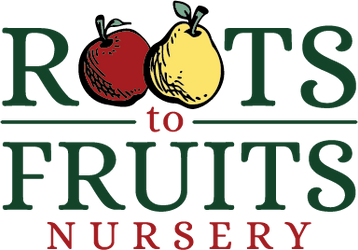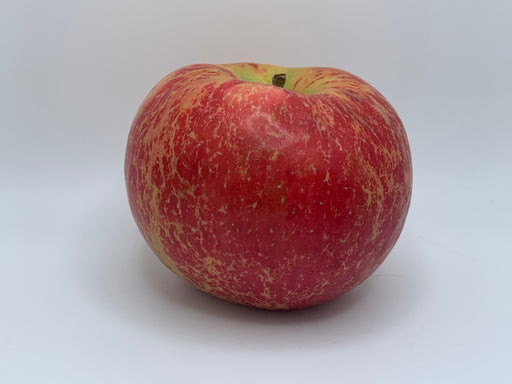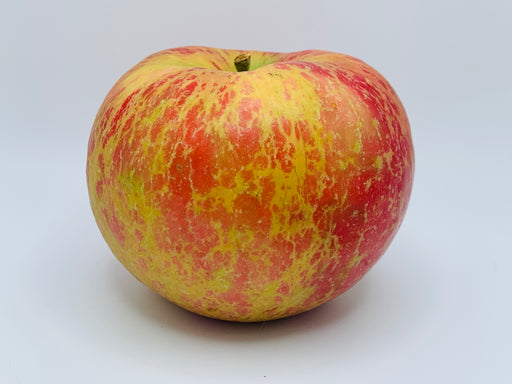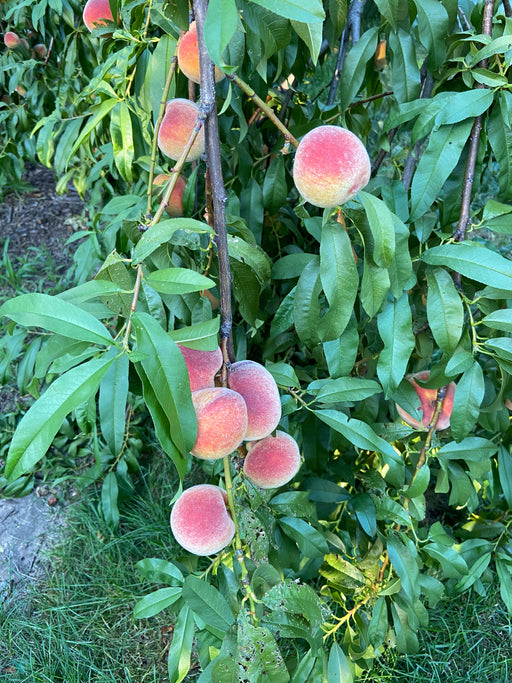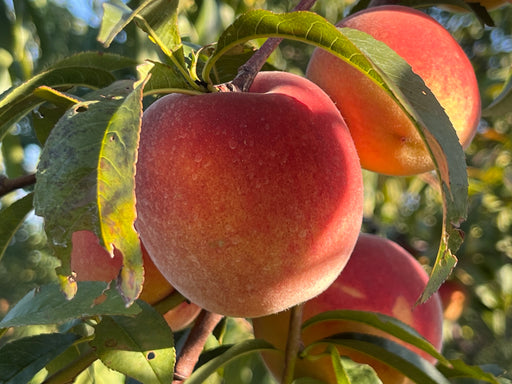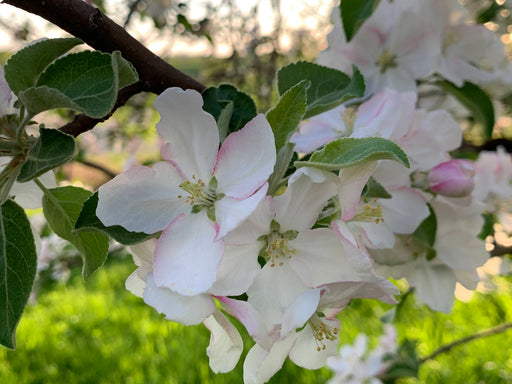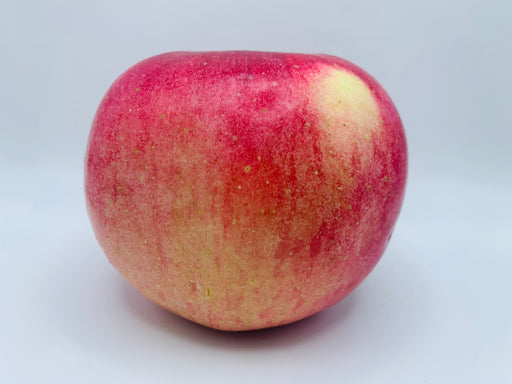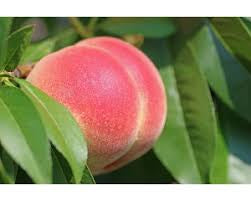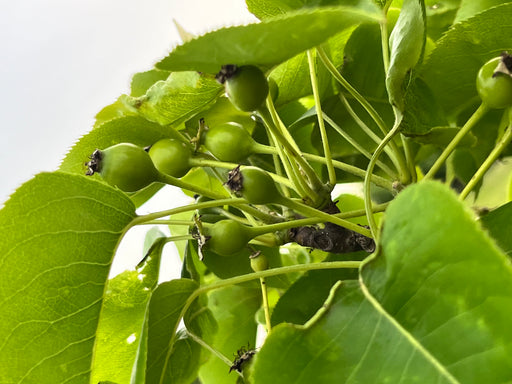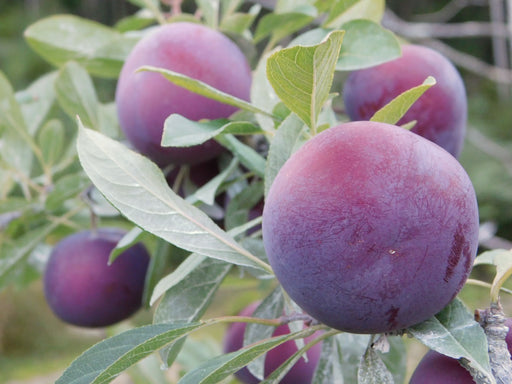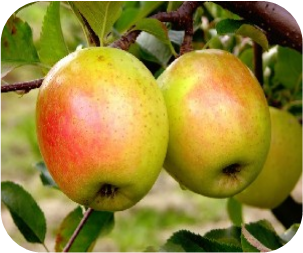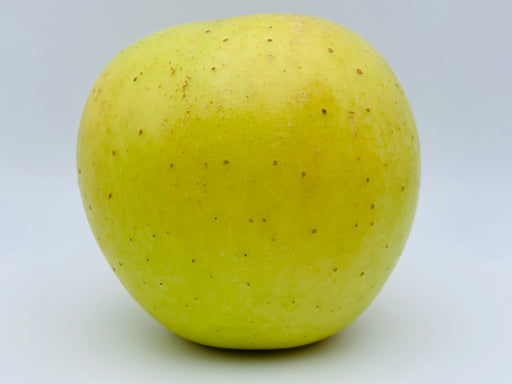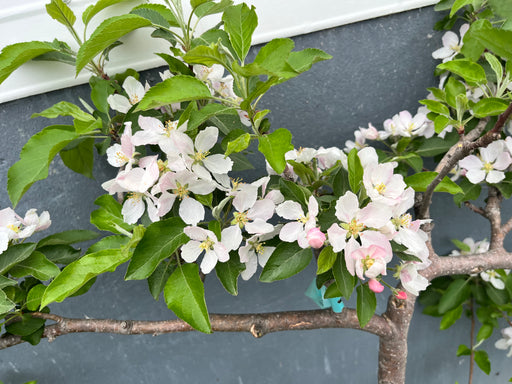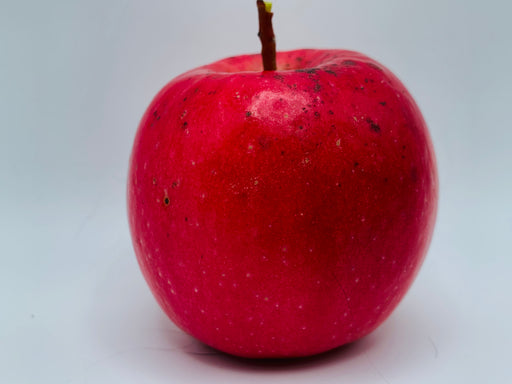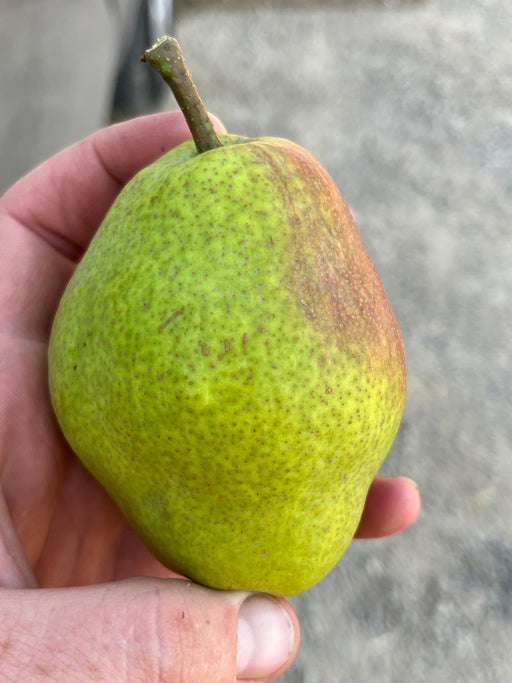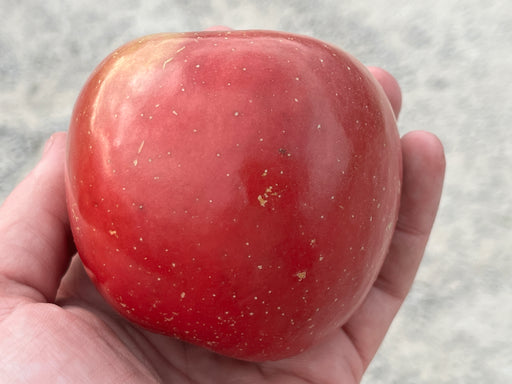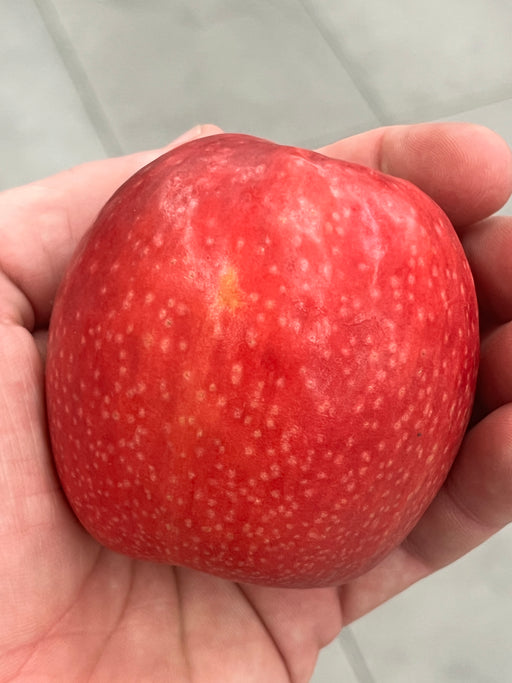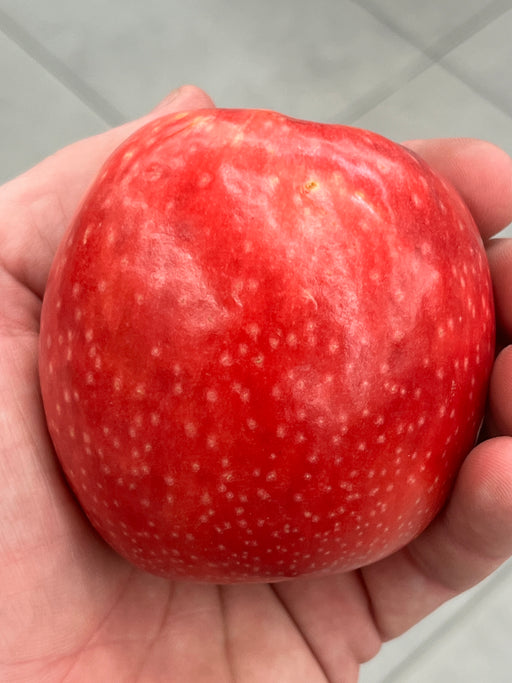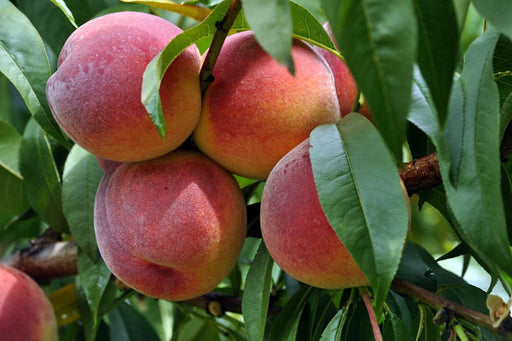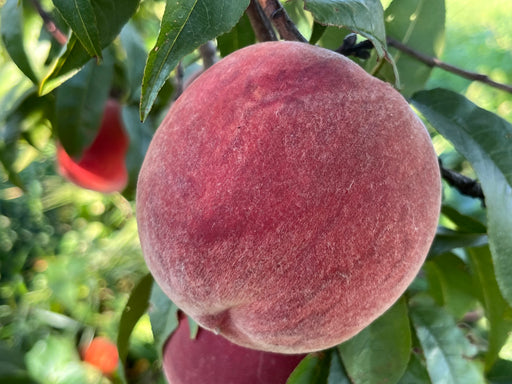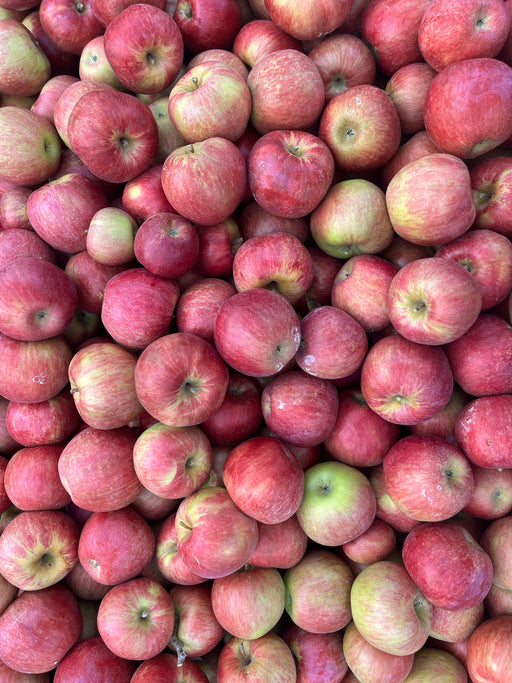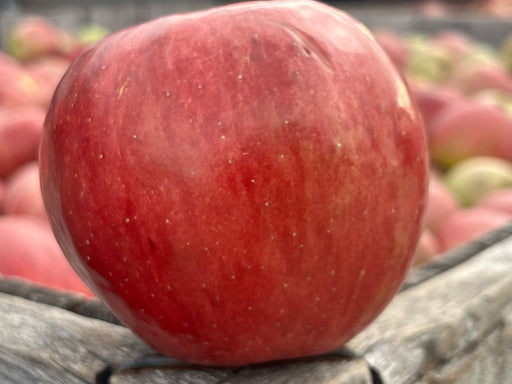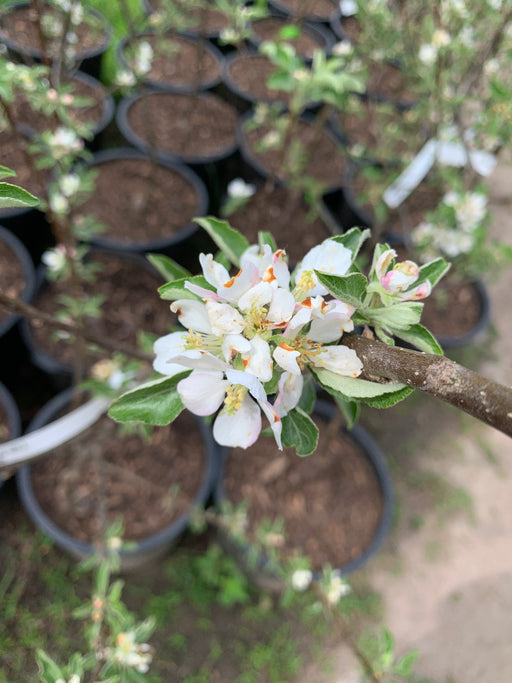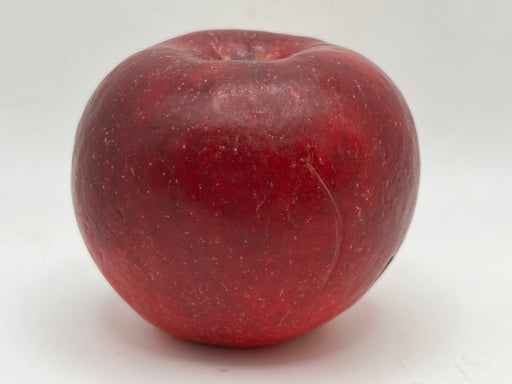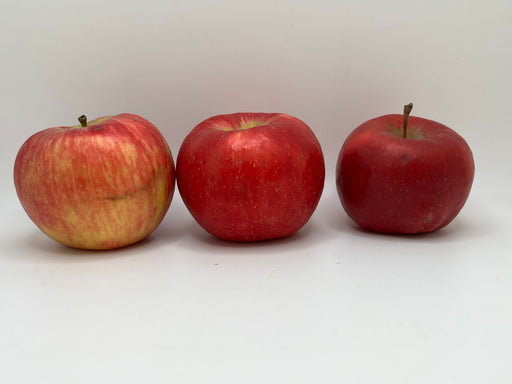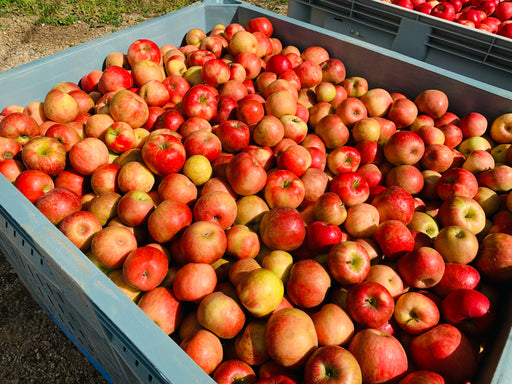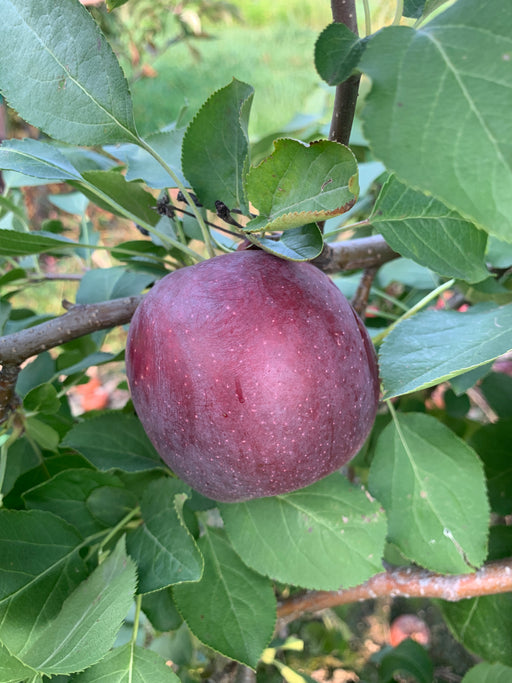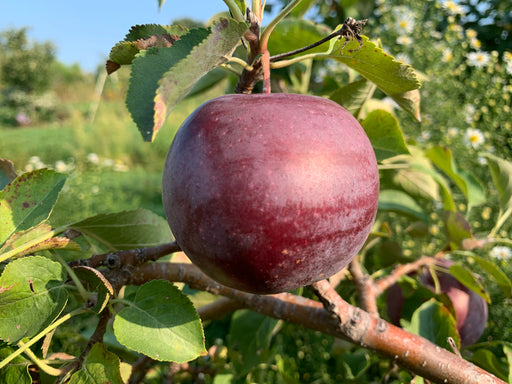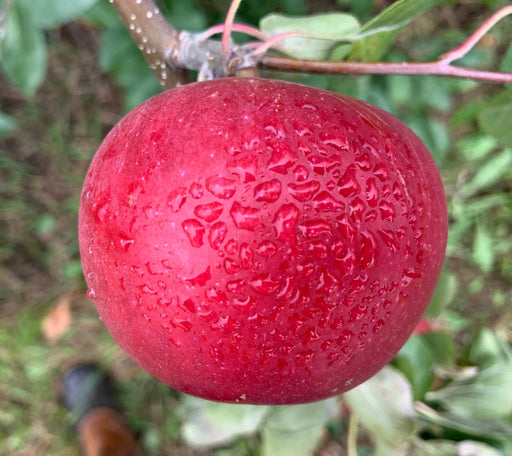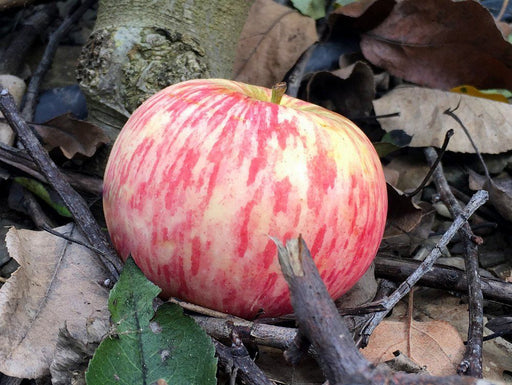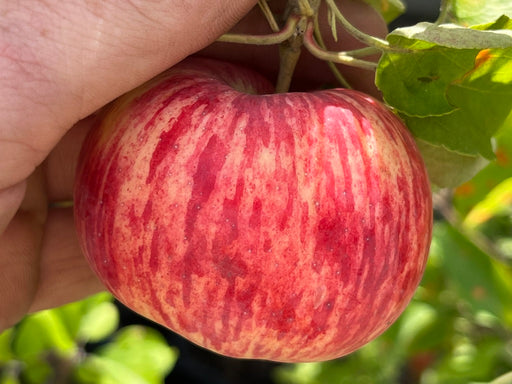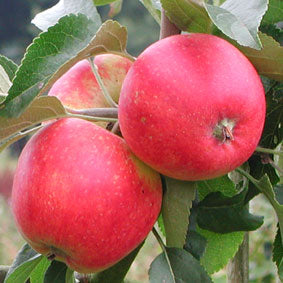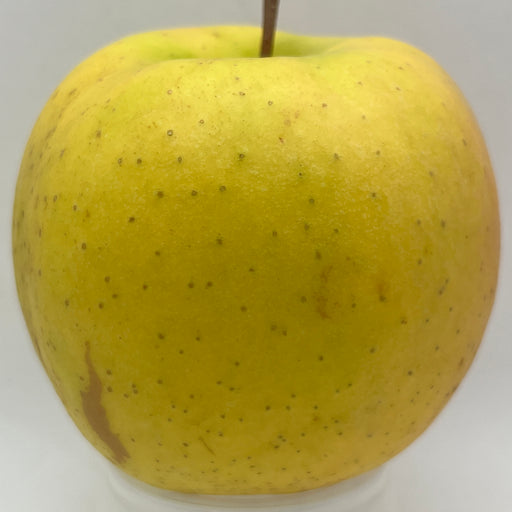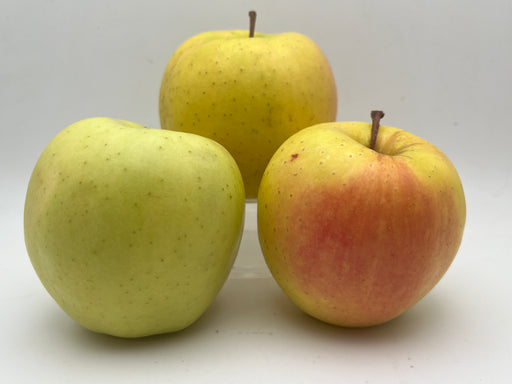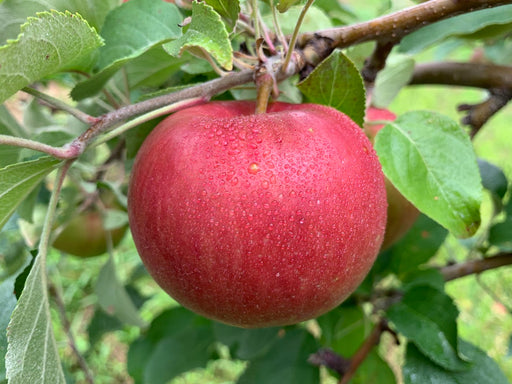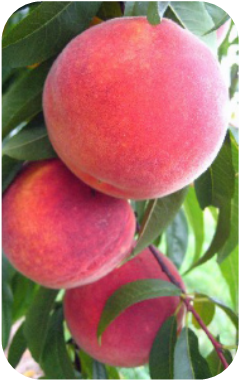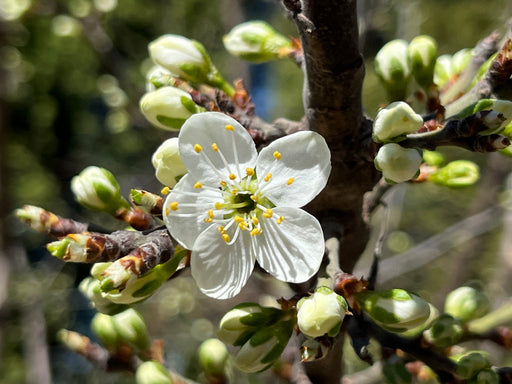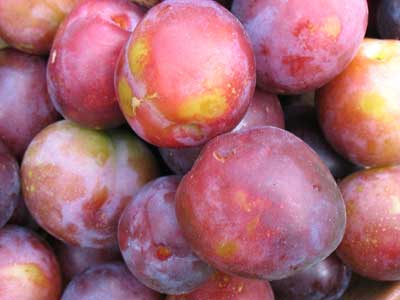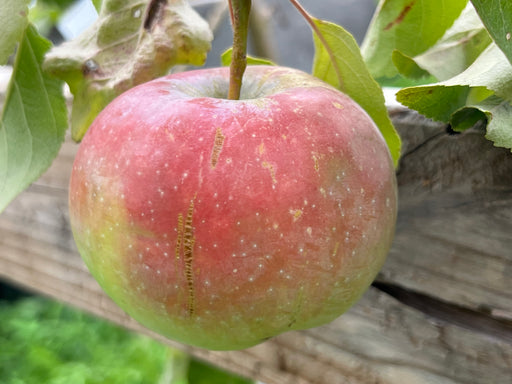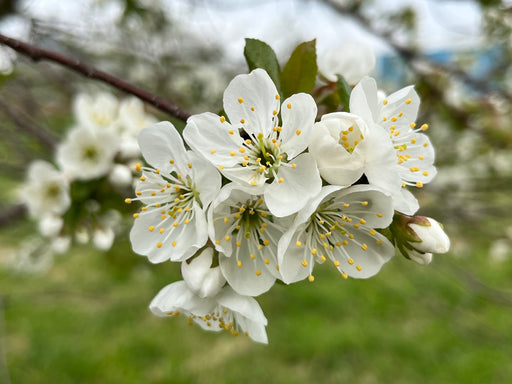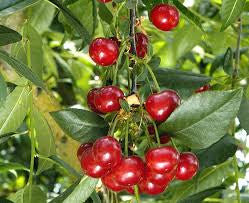Fruit Trees
Our apple trees, like many fruit trees, are propagated by grafting. There are two parts to an apple tree. The scion is the fruiting part of the tree, which gives you the variety of the apple, and the rootstock, which influences the mature size and hardiness of the tree, and determines the time it takes for the tree to fruit. We sell Standard, Semi-Dwarf, Dwarf, and Mini-Dwarf trees that do not require a lot of space and yet, will bear large fruit.
A few key notes on successful planting methods:
- Trees must be planted in well-drained soil
- Six hours of sunlight; full sun preferred
- Stake all trees for the first two years
- Dwarfs must have permanent stakes
- Tree guards should be used
- Plant at least two different apple tree varieties for Cross-Pollination
- Plant disease-resistant trees for less maintenance; we are happy to help make any suggestions you might need
We categorize our apple trees into at least five sizes: Petite, Maiden, Field Ready, Hand Select, and Container depending on the size of the tree. The Petite tree is our smallest graded tree less than 2 years in age; Maiden trees are usually 2 years old and are branchless. These are also called whips and will bear in 2-3 years. A Field Ready tree is 2-3 years old and might have some lateral branching, be thicker above the graft, and will bear in 1-2 years. The Hand Select trees are only about 20% of trees we have and are 3 year old trees, 6-9’ tall and can be heavily branched. You can expect fruiting on a Hand Select tree in about a year.
Honeycrisp Apple Trees
If you've ever heard of an apple- its probably the Honeycrisp. The University of Minnesota introduced this cold hardy apple variety in 1991 and it ...
View full detailsContender Peach Tree
The Contender peach (Prunus persica) is a variety of peach that was developed at the Agricultural Research Service's Southeastern Fruit and Tree Nu...
View full detailsWolf River Apple Tree
This is an enormous apple. First discovered in 1875 along the Wolf River in Wisconsin- this apple soon became a popular baking apple because you on...
View full detailsReliance Peach Tree
Originally created in 1964 in New Hampshire as one of the earliest cold hardy peaches. It is freestone and self-fertile. The Peach is medium to lar...
View full detailsBlack Ice® Plum Tree
Plant breeder Brian Smith first developed in River Falls, WI in the early 2000s- the patent filed in 2004- as a cold hardy plum option. First cross...
View full detailsGoldRush Apple Tree
Introduced from the Purdue-Rutgers-U of I Apple Breeding Program in 1994, the GoldRush apple is an excellent late season apple. Originally known as...
View full detailsGala Apple Tree
James H. Kidd first discovered the Gala Apple as one of several seedlings that results from a breeding program in New Zealand. The Gala first gaine...
View full detailsKieffer Pear Trees
Said to have been discovered in the late 18th century in Philadelphia on a fruit farm owned by Peter Kieffer but now is planted widely across the e...
View full detailsFuji Apple Tree
First bred in the 1930s, this apple has grown to be one of the most popular apples sold around the world. Its lengthy storage abilities and crisp t...
View full detailsPink Lady® Apple Trees
Bred at the Department of Agriculture in Western Australia in 1970 by researcher John Cripps. He crossed the red Australian apple Lady Williams wit...
View full detailsRedhaven Peach Tree
Another freestone peach, the Redhaven Peach ripens in mid July and is the industry standard peach tree. Early or late ripeness depends on how many ...
View full detailsSweet Sixteen Apple Tree
This University of Minnesota variety was introduced in 1977 and is a cross between the Northern Spy and MN 447 (Frostbite) Apples. Commercially via...
View full detailsCrimsonCrisp® Apple Tree
First created at Rutgers Fruit Research Center in New Jersey in 1971 and is a cross between apple PCF2-134 and PRI 669-205. The CrimsonCrisp® was c...
View full detailsCameron Select Red Honeycrisp Tree
Please see our main Honeycrisp page for a general description. The difference between the Cameron Select and the standard Honeycrisp is a matter of...
View full detailsArkansas Black Apple Tree
Introduced 1870 in the orchard of a Mr. Brathwaite, the fruit, a variety of Winesap, round and of medium size. The flesh is yellow, fine grained, c...
View full detailsZestar Apple Tree
Introduced in 1999 by the University of Minnesota as another cold hardy apple. The Zestar, also called Minnewashta, is a cross between the State Fa...
View full detailsDuchess of Oldenburg Apple Tree
This regal apple is named for Grand Duchess Catherine of Oldenburg, sister to Czar Alexander I and originates from the late 17th century in Eastern...
View full detailsPixie Crunch Apple Trees
Pixie Crunch, or Co-op 33, is a 1971 cultivar of the PRI Institute grown at Purdue University. Descended from the Golden Delicious and Red Rome app...
View full detailsChampagne Apple Tree
First found in a New Mexico Valley in the 1940s, the Champagne has quite the volatile history. The Dixon family began growing this apple as soon as...
View full detailsSnowsweet Apple Tree
The University of Minnesota introduced this cold hardy apple in 2006 and is a crosse between the Sharon and Connell Red apples. It is consistently ...
View full detailsCresthaven Peach Tree
This peach is a firm, yellow to red highly colored variety for late season. The Cresthaven’s fruit is yellow-fleshed, freestone, and shows consider...
View full detailsMethley Plum Tree
Japanese cultivar, medium-large, rusty maroon colored, vigorous grower, disease resistant, profuse bloomer in early spring, susceptible to early fr...
View full detailsTriumph™ Apple Tree
First available in 2021, the Triumph™ apple is a recent University of Minnesota variety. A cross between the Honey Crisp and Liberty apples, the T...
View full detailsNorth Star Cherry Trees
Its hardiness down to zone 4 makes this cherry popular in northern climates. The trees grows vase shape (taller than wide) with smaller, bright red...
View full details